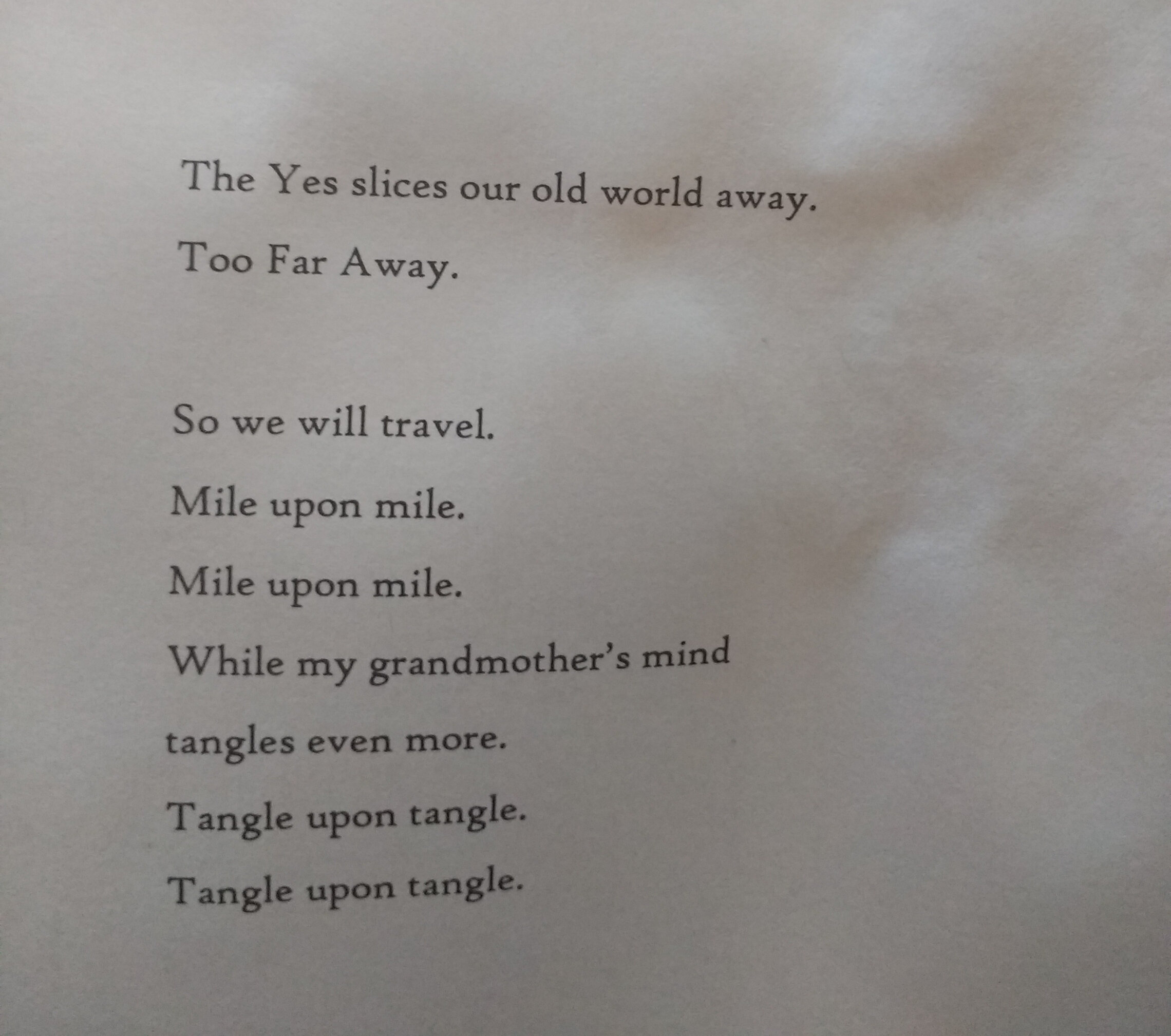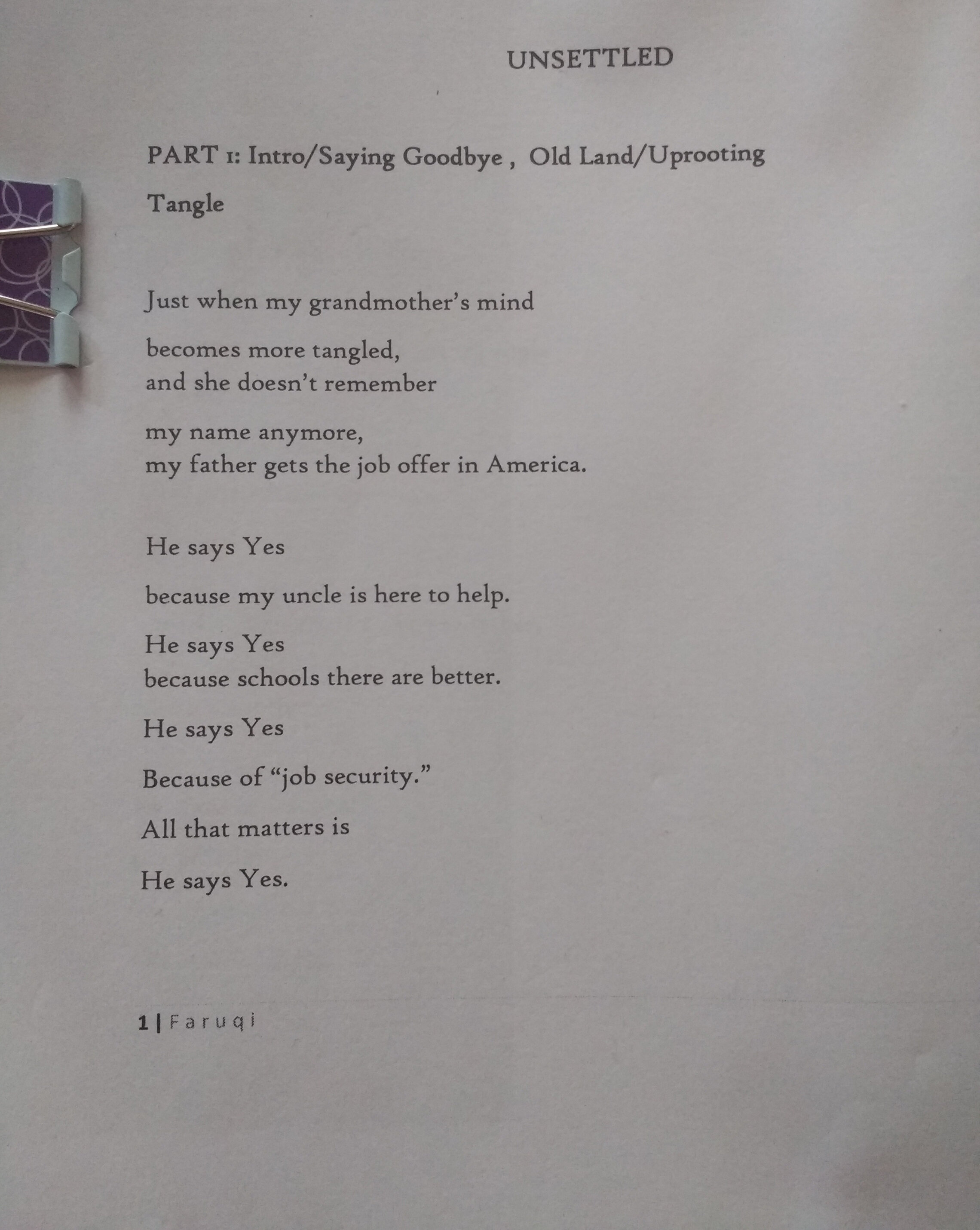Welcoming Two New South Asian American Verse Novels
When I wrote A TIME TO DANCE, I hadn’t set eyes on a single desi verse novel in English for young people. So it is with such very special joy, today, that I celebrate 2 South Asian American verse novels: Rajani LaRocca’s Red, White and Whole and Reem Fauqui’s Unsettled. Rajani’s novel has been out in the world for a few months; Reem’s was just released ! Both Faruqui and LaRocca will be celebrating Faruqui’s launch today, together with Gayatri Sethi (also known as Desi Book Aunty - and educator, consultant, writer and author of Unbelonging, a forthcoming book of “verse-like compilations about intercultural anti-blackness, social justice and South Asian diaspora… an experimental migrant narrative of a Desi coming of age in multiracial Africa and America” that is forthcoming this year.
Unsettled and Red White and Whole share so much. Both novels feature strong female protagonists, whose families are South Asian. Both center around the theme of immigrant identity. Both protagonists attend middle school in the United States. Both share certain experiences - common with which many, if not all readers who have any sense of an immigrant background, will easily identify with with: a sense of isolation, questions about fitting in (or not wanting to), culture “clashes” and, ultimately, the triumph of finding one’s own place in the world and one’s own way in it. There are other similarities, too - both girls come from cultures where women dress differently, both have warm extended families in South Asia, both have parents who struggle to overcome hurdles and create a home in the country of their adoption. Both have descriptions of South Asian cuisine that will make your mouth water. Both ARCs began with heartfelt letters, written by the authors.
Of course, there are many differences between the two protagonists, as well. Each girl has her own journey and is her own person. Reem’s Nurah has a brother, Owais, who is undergoing his own struggles after the family’s move to America; whereas Rajani’s Reha is an only child. Nurah’s family is Muslim, whereas Reha’s is Hindu. Nurah longs to win medals for swimming, whereas Reha dreams of becoming a doctor. Nurah’s story begins in Pakistan, and so we see her struggle with homesickness; Reha is growing up in a midwestern town where she was born - and her parents moved from India. And an interesting coincidence - which is somewhat similar and somewhat different - Reha’s name means star and Nurah’s best friend is called Stahr!
Reem shared with me this beautifully written story-behind-her-story.
The Story Behind the Verse
Words intimidate me. This may be the reason why I gravitate mostly to books for younger readers where there are less words. I didn’t even know where the adult section of my library was until recently.
I am a picture book author and didn’t think of myself as writing for older children. However, after receiving feedback from a couple of editors for a picture book where something I wrote sounded like a chapter book, my first agent encouraged me to write for older children. I was a little reluctant initially but thought I would give middle grade a try. So four years ago I started my novel. I knew I wanted it to be about an immigrant character like me.
First drafts are often very rough and mine was a tangle of thoughts, anecdotes, and memories. Desperate for feedback, I sent it to my agent Ilse Craane in September of 2016 to see if I was on the right track and she encouraged me saying,
“I read a little of your MG and you’re doing great! I think we were right, and so were the editors, that you are more suited to write novels! The language is wonderful and I think you’re developing some great characters and ideas. I didn’t read all of it because it seems very raw still. It reads a little like a novel-in-verse, which could work, is that what you are thinking?”
I hadn’t really tinkered with novels in verse. I did enjoy reading them, but did not think much about writing my own. I didn't even know it was an option for me. I shelved my manuscript for a while and checked out many novels in verse. I loved how these books could be tender and tough and tackled deep topics.
All the while, I wanted to tell my story in the best way possible. At that time, it was told by multiple characters’ points of view and was written in clunkier prose. I changed it up so that only my main character Nurah was telling the story. I deleted a couple characters including one called Mouseface! I then took the most poetic and pretty words and started putting them in verse. This process felt freeing.
I loved the white spaces and how the words looked less cluttered.
The words breathed.
They looked happier in verse.
I loved adding an emotional punch at the end of each verse paragraph.
After years of working and giving up on my story, I was delighted when my novel in verse UNSETTLED got me my current agent Rena Rossner.
Rediscovering verse opened up a new literary world for me, a world where words became less intimidating. To me, verse is the most freeing way to write.
Here’s a sneak peak at 2 pages from UNSETTLED:
As for Red, White and Whole, I was invited to blurb it - and, as few things give me greater joy than encouraging new authors of color, I was absolutely delighted to do so. I put away all that I had to do and carved out time to read this new verse novel - and it is with joy that I share my entire blurb here, today:
LaRocca's RED WHITE AND WHOLE is a tender-hearted addition to the growing body of literature about growing up South Asian American, such as Perkins's THE NOT SO STAR-SPANGLED LIFE OF SUNITA SEN, Sreenivasan's ARUNA'S JOURNEYS, Sheth’s NO DOGS ALLOWED RULE, and Krishnaswami's NAMING MAYA. Growing up South Asian in an otherwise white school isn't always simple for Reha, who navigates between "two lives. / One that is Indian, / one that is not". Like the protagonist of CATCHING A STORY FISH, Reha is quiet and shy. She has friends in both cultures and loves both. Like her best friend Rachel, she longs to attend the school dance, but fear her strict immigrant parents won't let her. At the dance, Pete, a classmate with whom she's working on an English project that includes an exploration of what heroism means, and on whom she has a crush, holds her hand - and Reha is delighted. But soon after, her mother is diagnosed with leukemia, and her Reha's world turns upside down. Is she brave enough to be a hero herself? This is a sweet, gentle story about love and loss, friendship and family, belonging and longing to live up to one's dreams. In Reha, readers will meet a relatable protagonist who feels caught between two cultures, but ultimately finds her own way.





